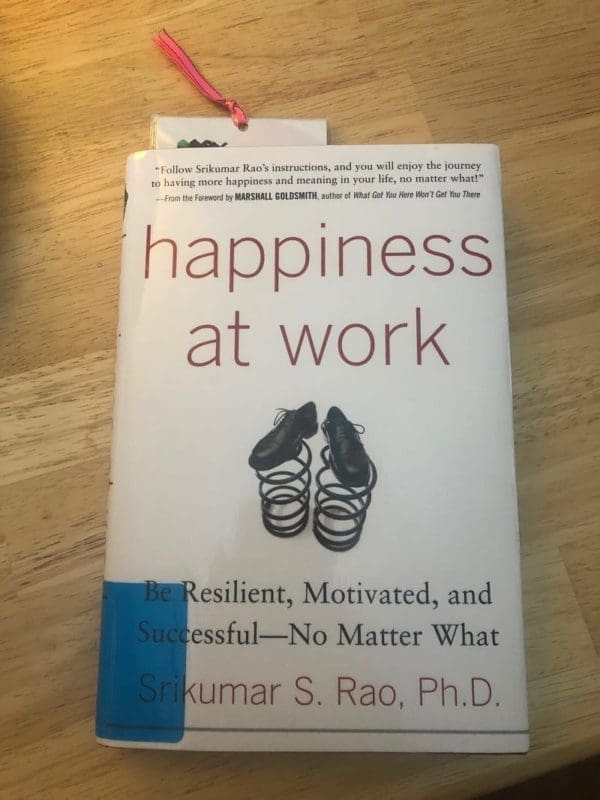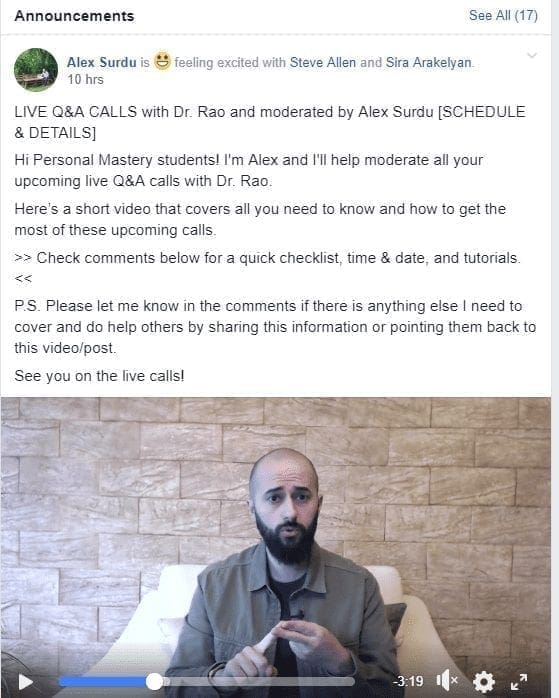I took the Personal Mastery quest by Srikumar Rao this past year, and in each video, he had his books beside him on the table. So when I finished the quest, I decided to get one of the books. I ended up getting Happiness at Work, because who doesn’t want that? I noticed something interesting immediately, and it makes for a very unique book review.

Happiness At Work And Personal Mastery Have The Same Lessons
Right from the beginning, I had déjà vu. I had heard what I was reading before, and I knew it was in his Personal Mastery program through Mindvalley.
I didn’t want to go into the quest and compare what I was reading to it until I was done the book. So, I waited until I finished the book and as soon as I decided to write this review, I opened up the quest and noticed what I already knew. Happiness at Work and Personal Mastery have a lot of the same topics. They are just ordered differently in the book as opposed to the course.
Moreover, those shared topics share the same content. It seems like the content in Happiness at Work was repurposed into the Personal Mastery quest.
For instance, in the following picture, you can see that chapter 33 in the book is called, ‘Beware the stories you tell and the company you keep!’ and in the course, you have the same title for day 38.


I decided to listen to day 38 while I was reading from chapter 33 and noticed that he was sometimes reading word for word from the book with a little improv here and there. Sometimes he told the stories or information in a different order or way than the book. The book had an extra story that the quest didn’t have. And the exercise in the book was slightly different than the exercise in the quest. But, overall, it was the same topic and message, without a doubt.
The bottom line is that everything I read was definitely in the quest. Sometimes there were different stories or things were worded differently, but the lessons were all there.
The Differences Between The Book And The Quest
There are some differences between the book and the quest.
1. The Quest Has A Few More Lessons
The book has 35 chapters, which are all separate lessons. The quest has 45 separate lessons in total. So, there are 10 extra lessons that are not in the book.
2. The Quest Has Bonus Q&A Content
The quest has a few extra hours of Q&A video with extra insight into the topics at hand.
When I took the quest, the calls were pre-recorded, but I just went and took a quick look at the Facebook group and saw that they are doing live calls again soon. I’m not sure how often they are going to do live calls, but whether you are watching the pre-recorded calls or the live calls, it’s definitely extra content that can help you better understand what Srikumar is teaching.

3. You Get Immediate Access To Lessons In The Book
In the quest, you are supposed to take one lesson per day. In fact, you can’t access future lessons as they open up one per day as you go through the quest.
But, in the book, you can read it all in the same day if you want to.
4. The Quest Has The Facebook Group
If you want to talk about what you learn, then the quest offers you a Facebook group with other students taking the course. You can share stories, ask questions, and help other people in the group in whatever way you can. It’s about creating a community.
I’m sure you can find people who have read the book and discuss it with them, too.
5. The Book Is Cheaper
This is an obvious difference. The book I read was $22 USD, while the course is $449 USD as of right now with a discount. Sometimes, when it becomes a featured course on Mindvalley or you take the masterclass, the price can go down. Obviously, though, it will be a big price difference no matter what.
But, this makes sense because courses, seminars, lectures, and events are always more expensive because they offer more interaction and incentives.
Similarities Between The Book And The Course
There are also some similarities.
1. The Lessons Are Short
The quest and the book both contain short lessons. You can quickly read a chapter just as you can quickly listen to one lesson.
I could easily read each chapter in 10 minutes or less, and that’s the way the quest is set up – you watch a video with Srikumar talking and it lasts less than 10 minutes – only occasionally going a few minutes over 10.
2. There Is An Exercise At The End Of Each Lesson
At the end of each lesson, whether you are reading Happiness at Work or taking the quest, you have an exercise to complete.
3. They Both Teach You How To Gain More Mastery Over Yourself
Just like the quest the book is about changing your mental models – the way you look at the world – and developing better ones that help you reduce stress, be happier, and bounce back from negative situations faster.
Benefits Of The Book
- Cheaper
- Read at your own pace.
Benefits Of The Quest
- A few extra lessons in the quest – book had 35 chapters and the quest has 45 lessons.
- A lot of extra content with the Q&A videos
- Listen instead of reading. Some people have a hard time focusing while reading but can easily pay attention when listening.
- Get access to a tribe of people focusing on the same subject
- Get access to only one piece of content per day and take some extra time to mull it over and possibly implement into your life.
- You can access the information in an app or through the Mindvalley dashboard.
They Are Both Valuable
Whether you like to read and find the book’s benefits more appealing, or you like to listen to someone talk and find the quest’s benefits more appealing, you will win either way. They both contain lessons that can help you change your mental models in life and be more resilient.
You can read my review of the Personal Mastery quest here or check out the book on Amazon here.


